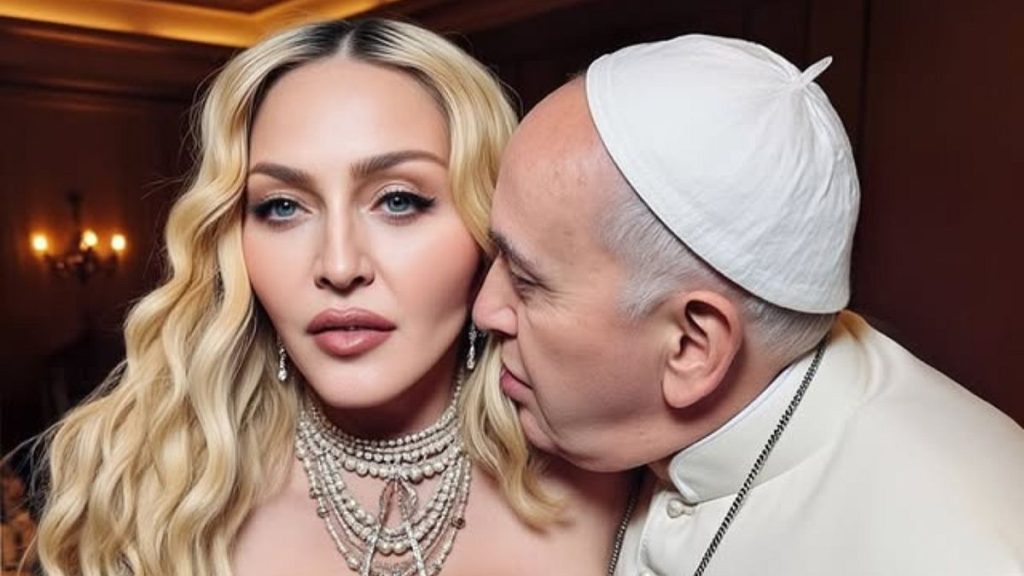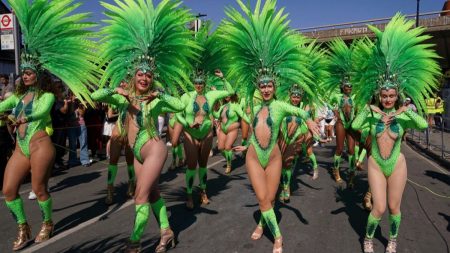Madonna’s recent social media post featuring AI-generated images of herself cozying up to Pope Francis has ignited a firestorm of online criticism, particularly from the Catholic community. Many have deemed the images disrespectful and unethical, accusing the singer of crossing a line. However, to view this incident as an unprecedented departure for Madonna is to fundamentally misunderstand her career-long engagement with religious imagery and provocation. For over four decades, Madonna has consistently interwoven Christian symbolism, particularly Catholic iconography, with her exploration of sexuality and artistic expression. This latest controversy, therefore, is not a singular event but rather another chapter in a well-established pattern.
From her early career, Madonna has used religious motifs in ways that challenge traditional interpretations and societal norms. Her 1984 album, “Like a Virgin,” and the subsequent music video for the title track, already hinted at this tendency. However, it was the 1989 release of “Like a Prayer” that truly cemented her reputation as a provocateur. The music video, featuring burning crosses, stigmata, and an interracial romance, caused widespread outrage and condemnation from religious groups, including a call for a boycott by Pope John Paul II. This incident marked a significant escalation in Madonna’s use of religious imagery, pushing boundaries and sparking intense debate about the intersection of faith, art, and popular culture. This willingness to confront established norms, even at the risk of significant backlash, has become a defining characteristic of her career.
Beyond the specific use of religious imagery, Madonna’s career has been punctuated by a consistent embrace of controversy, often centered on her open expression of sexuality. The 1992 release of her coffee table book, “Sex,” featuring explicit images and simulated sex acts, further solidified her image as someone unafraid to challenge societal taboos. This bold and unapologetic approach to sexuality, combined with her provocative use of religious iconography, has established Madonna as an artist who consistently pushes the envelope and challenges conventional morality. Her willingness to explore these themes in her work, even at the risk of alienating some audiences, underscores her commitment to artistic freedom and self-expression.
Madonna’s engagement with religion extends beyond Catholicism. She has also publicly explored other spiritual traditions, including Hinduism, Buddhism, and Kabbalah, incorporating elements of these practices into her music and personal life. This broader exploration of spirituality further complicates any simplistic interpretation of her relationship with religion. It suggests a deeper fascination with the symbolic language and power of faith, rather than a purely antagonistic stance towards any particular religious institution. Her repeated excommunications from the Catholic Church, a fact she humorously highlighted in a tweet directed at Pope Francis, serve as further evidence of this complex and often fraught relationship.
The recent AI-generated images, while arguably crude and uninspired, should be viewed within this broader context of Madonna’s artistic trajectory. They represent not a radical departure but rather a continuation of her long-standing practice of using religious imagery in provocative and attention-grabbing ways. While the quality of the images themselves might be open to criticism, dismissing them as mere gaffes overlooks the larger narrative they contribute to – a career defined by challenging norms, pushing boundaries, and sparking dialogue about religion, sexuality, and artistic expression. Indeed, the very act of generating these images, knowing the likely reaction, can be seen as a performance in itself, a continuation of Madonna’s ongoing engagement with controversy as a core element of her artistic persona.
While some might argue that Madonna’s more recent controversies lack the cultural impact of her earlier work, attributing them to simple missteps or a decline in artistic relevance fails to acknowledge the evolving landscape of media and public discourse. In a world saturated with information and increasingly desensitized to provocation, generating genuine controversy becomes more challenging. Furthermore, the nature of controversy itself has shifted in the age of social media, often characterized by fleeting outrage cycles and fragmented public attention. Therefore, while the AI-generated images of Madonna and the Pope might not resonate with the same intensity as “Like a Prayer,” they still function within the broader context of her career-long strategy of using provocation as a tool for artistic expression and cultural commentary.














